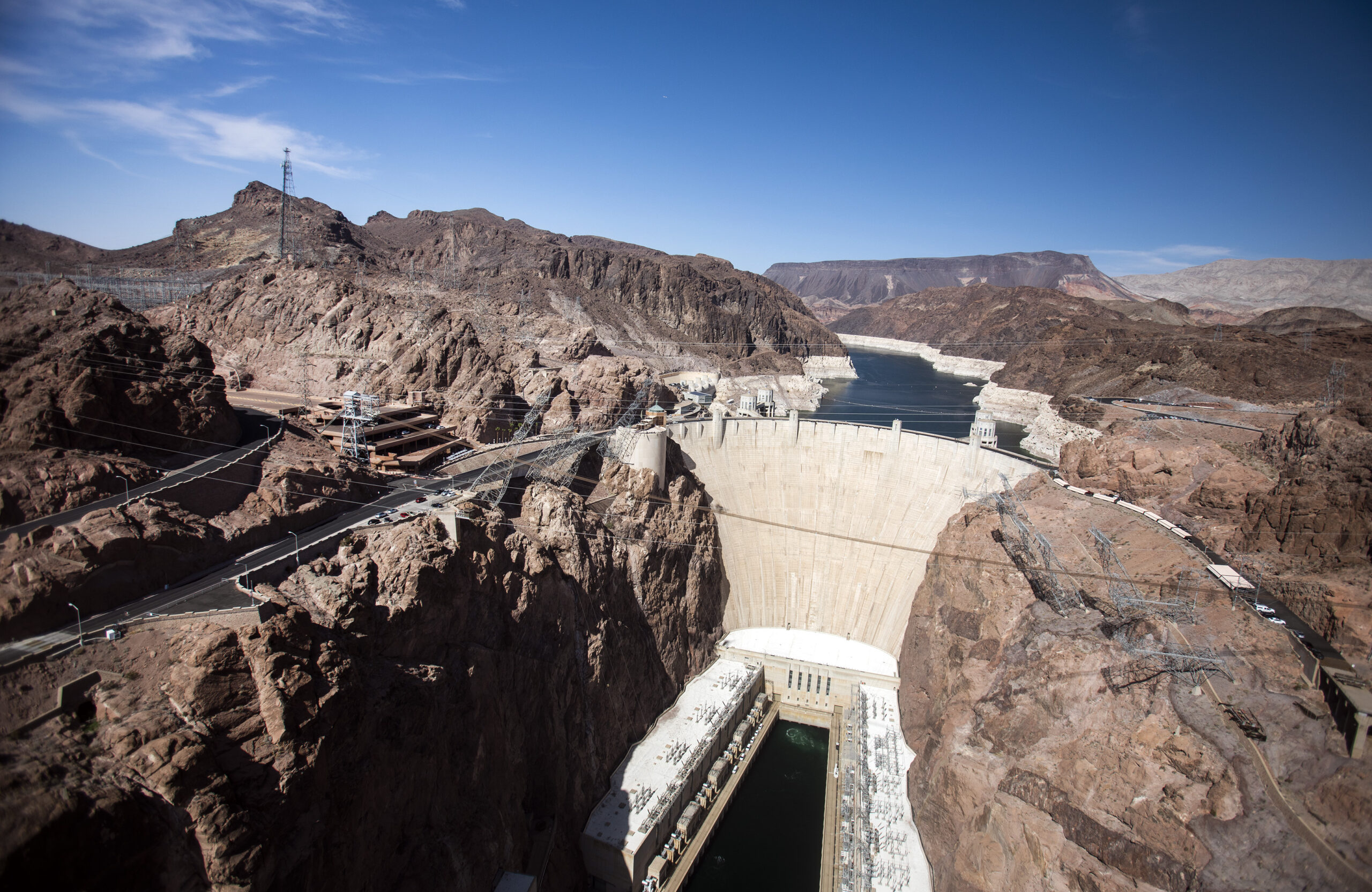Colorado River forecast to trigger first-ever required cuts, no impact to Las Vegas use

For the first time starting in 2020, Arizona, Nevada and Mexico will be required to forgo a portion of their Colorado River supply under a short-term drought plan signed earlier this year.
The decision to implement those cuts came on Thursday after federal water managers released a study that serves as a key benchmark for Southwest states. That forecast predicted that Lake Mead would start 2020 at 1089.4 feet above sea level, below the 1090-foot trigger for the cuts.
By forgoing water in dry years, the states store more water in Lake Mead, a reservoir that has decreased over the past two decades because of overuse, drought and climate change. If the reservoir drops further, states would be required to take more cuts to their allotment. When reservoir levels rise, the states are allowed to access the stored water for future use.
In practice, the cuts will have no effect on Nevada’s short-term water security or water management. The Southern Nevada Water Authority is expected to voluntarily conserve about nine times more water this year than the required cuts under the drought plan in 2020. Since 2003, Nevada has used less water than what the state is allowed to take under the river’s interstate compact.
In 2017, the state used about 80 percent of its allotment, largely in part because of indoor water recycling and conservation programs that incentivize removing grass. This year the water authority is on track to use even less. That means Nevada is likely to leave substantially more water in the reservoir this year — as much as 75,000 acre-feet — than what is required by the cuts — about 8,000 acre-feet — next year. (An acre-foot is an agricultural term for the amount of water that can fill an acre to a depth of one foot. Nevada’s allocation is 300,000 acre-feet).
Bronson Mack, a water authority spokesman, said that the agency has cut its Colorado River water use by 25 percent since 2002, even as Las Vegas’ population has grown by 40 percent.
“We’re providing more people with less water,” he said.
But the cuts are still significant, said John Fleck, a University of New Mexico professor who has a forthcoming book, “Science Be Dammed,” that looks at the history, politics and hydrology of the river. They mark the first time the states have been required to use less than their allocation.
“That’s a huge deal,” he said.
It is also a recognition of a future where there is expected to be less — not more — water to go around. Even though above-average levels of snow fell across much of the West this year, the long-term trend in the Colorado River is toward declining streamflow. Research has found that high temperatures have made runoff less efficient. Scientists say that climate change could further reduce the river’s flow and make managing it more difficult, even as demands grow.
Heavy precipitation made a difference this year. When the U.S. Bureau of Reclamation released its 2019 forecast last year, the study predicted an official shortage in 2020. Water users avoided that declaration, although the federal water agency warned that they are not out of the clear.
“While we appreciate this year’s above average snowpack, one good year doesn’t mean the drought is over. We must remain vigilant,” Reclamation Commissioner Brenda Burman said in a statement Thursday. “I applaud everyone who came together this year to get the drought contingency plans done. The additional actions under the contingency plans will help ensure the reliability of the Colorado River system for the 40 million people dependent upon it.”
And despite the big water year in 2019, Lake Mead still remains low after two decades of arid conditions. To recover, Kim Mitchell, a senior water policy advisor at Western Resource Advocates, said “we’d need many years of high runoff” from the Rocky Mountains that feed the river.
“One year isn’t enough,” she said.
